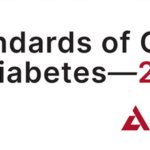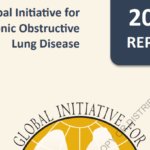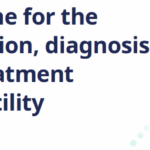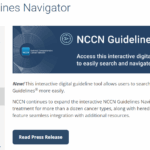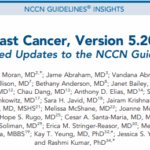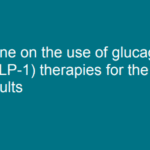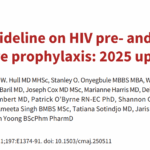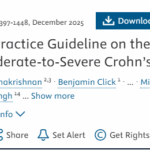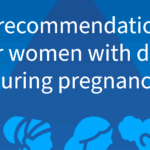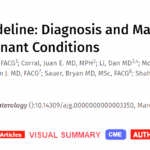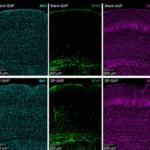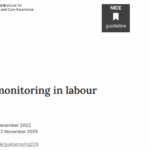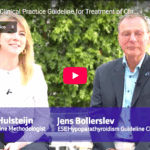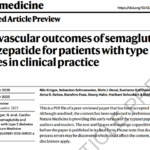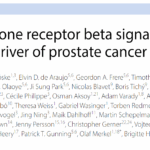Linee guida per la gestione della nevralgia del trigemino
Dolore e cure palliativeLe linee guida per la diagnosi e il trattamento dei pazienti con nevralgia del trigemino (TN) sostengono un approccio di gruppo...
Guida pratica sulla gestione dei pazienti con diversi fenotipi di scompenso cardiaco
CardiovascolareI pazienti che convivono con insufficienza cardiaca (HF) possono avere caratteristiche, tratti e presentazione clinica differenti, definiti...
Complicanze neurologiche del Long-COVID
COVID-19L’American Academy of Physical Medicine and Rehabilitation (AAPM&R) ha pubblicato una nuova guida di consenso sulla valutazione e...
Linee guida sulla gestione dell’Acne Vulgaris
DermatologiaQuesta linea guida di NICE copre la gestione dell’Acne Vulgaris nelle cure primarie e specialistiche. Include consigli su trattamenti...
Rapporto Agenas sui Medici di medicina generale
In Italia nel 2021 si hanno in attività 40.250 MMG (in calo di 1.457 unità rispetto al 2020), di questi circa il 75% ha oltre 27 anni di anzianità
Annuario 2021, i dati aggiornati del Servizio sanitario nazionale
I dati del 2021 relativi alle strutture sanitarie pubbliche e private accreditate, all’attività di ricovero e cura, alla rete del Servizio Sanitario Nazionale; un focus sull’impatto della pandemia Covid-19
Gestione dell’ictus acuto
CardiovascolareIl Canadian Stroke Best Practice ha pubblicato “NEW Acute Stroke Management 7th Edition 2022 UPDATED – September 2022“. In questo...
Gestione dell’emicrania cronica
EmicraniaL’emicrania cronica è un disturbo neurologico associato a notevole disabilità, perdita di produttività e un profondo onere economico...
Gestione delle complicanze psichiatriche e cognitive nel Parkinson
Malattia di ParkinsonSintomi neuropsichiatrici (NPS) come disturbi affettivi, psicosi, cambiamenti comportamentali e deterioramento cognitivo sono comuni nella...
Gestione chirurgica della pancreatite acuta
NefrologiaQuesta revisione pubblicata sulla rivista “The Surgery Journal” è una valutazione completa di 7 linee guida impiegate nella pratica...
Linee guida sul cancro del retto
Cancro al colon-rettoQuesta selezione delle Linee guida NCCN per il cancro del retto si concentra sulla gestione dei polipi maligni e del cancro del retto non...
Medicina di famiglia a rischio per carenze di nuove leve e pensionamenti anticipati
Medicina di famiglia a rischio per carenze di nuove leve e pensionamenti anticipati, Silvestro Scotti: «Subito l’Atto d’indirizzo per il rinnovo dell’ACN 2019-2021»
Medicina di famiglia a rischio per carenze di nuove leve e pensionamenti anticipati
Medicina di famiglia a rischio per carenze di nuove leve e pensionamenti anticipati, Silvestro Scotti: «Subito l’Atto d’indirizzo per il rinnovo dell’ACN 2019-2021»
Medicina di famiglia a rischio per carenze di nuove leve e pensionamenti anticipati
Medicina di famiglia a rischio per carenze di nuove leve e pensionamenti anticipati, Silvestro Scotti: «Subito l’Atto d’indirizzo per il rinnovo dell’ACN 2019-2021»
Urinocoltura per la gestione diagnostica delle infezioni alle vie urinarie
UrologiaL’urinocoltura, pietra angolare per la diagnosi di laboratorio delle infezioni delle vie urinarie, è associata a un’alta frequenza di...
Pancreatite acuta: diagnosi e trattamento
NefrologiaLa pancreatite acuta è una malattia infiammatoria comune del pancreas esocrino che provoca dolore addominale grave e disfunzione...



